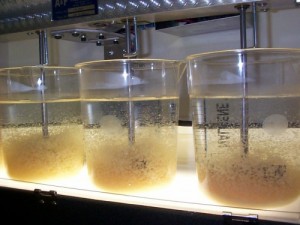Sludge treatment – An Achilles’ heel of the water treatment industry

A fellow colleague approached me with a wastewater treatment problem not so long ago. We reviewed the data, the number of people the plant was going to service including the industries, talked casually about the best technologies for achieving the required effluent standards. It all seemed easily attainable until the question of sludge treatment creeped up. All the professional answers that followed were a bit rattled by the question “ultimately, when the sludge has been dried and stabilised, what then?”. This is probably one of the crucial stages in wastewater treatment process design where the available technologies don’t seem to provide a one-word answer.
To put things into perspective let us consider the water treatment process:
A conventional potable water treatment plant receives raw water from a dam or a river. Such water contains dissolved and suspended solids which add undesirable colour and taste. This is then ‘removed’ using different chemical aided coagulation, settling and filtration based technologies. A somewhat similar process is used for wastewater treatment but mainly using bacteria which feed on the organics and nutrients contained in the feed stream before being settled to form part of the sludge. The amount and quality of sludge produced is thus directly related to the amount and quality of ‘feed’ to the plant and the ‘chemicals’ used to aid the treatment process. Wastewater treatment plants in industrialised areas often receive undesirable chemical products; these include heavy metals which mostly settle out and also form part of the sludge. The amount and nature heavy metals present in the sludge forms the basis of its classification and ultimately the environmentally appropriate disposal route.
Water and wastewater engineers find themselves having to make a call about environmentally considerate sludge disposal route. This often needs to be considered at preliminary design stage and forms part of the application for environmental authorisation.The available sludge treatment technologies cover a wide range; from briquetting, composting, land application and drying before landfill disposal. The choice is plant and location specific with each technology coming with its own perks. Briquetting is often energy intensive, composting requires a reliable end user, land application and landfill disposal requires environmental permits. It is not uncommon for sludge to be classified harzadous and not be accepted for land application or land disposal. Water treatment engineers often find themselves able to produce the required clean and safe water but puzzled by the by-product.
Understanding water and wastewater treatment process design is thus not enough anymore. In fact, the production of safe drinking water and environmental benign effluent should be considered second to sludge disposal. The environmental considerations have shifted most engineering approaches over the years so much that a new way of training engineers is needed going forward. After-all, it was Albert Einstein who said “the problems we are currently facing cannot be solved at the same level of thinking they were created”.
.. Mlu Mnguni
